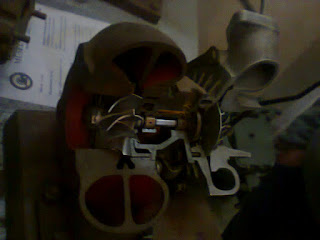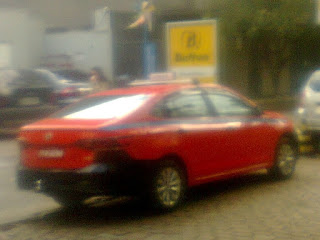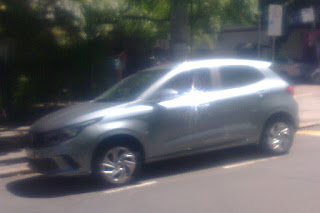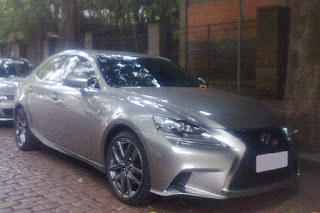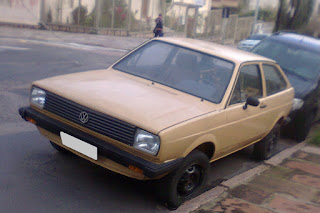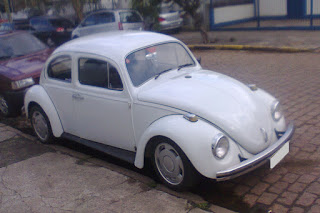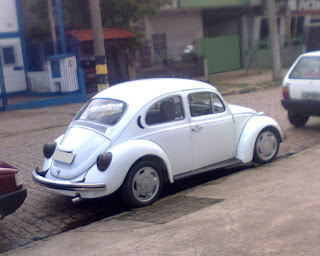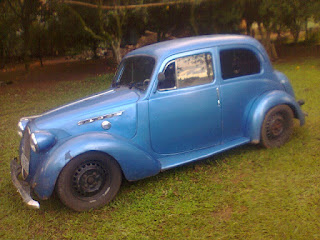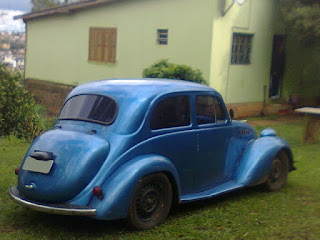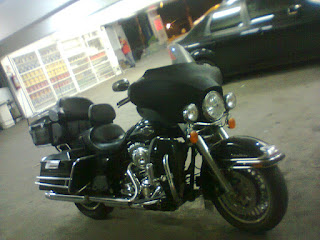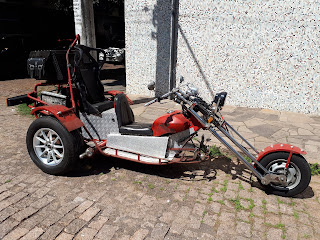It is undeniably quite challenging to make a "flexfuel" car retain some reasonable mileage figures on gasoline while it also features ethanol capability, especially when it's fitted with a random outdated engine such as the one which my mother's former Chevrolet Celta resorted to. Apart from an increase to the compression ratio and switching from throttle-body injection to sequential port-injection, that was roughly the same old Family 1-based introduced to Brazil in local variants of the Opel Corsa B which were rebadged as Chevrolet. Its ancient layout, praised for reliability and ease of maintenance, has some inherent drawbacks when it comes to overall efficiency.
Since 3-cylinder engines didn't have the same appeal in the Brazilian market as they do have now, the engine was basically a downgrade from the 1.2L to 1.0L because of lower taxes, and presumably also the economics of scale since it would still share some key design features with the 1.4L, instead of the 3-cyl 1.0L fitted to its European counterpart. The very same basic engine layout remains in use as the only powerplants available for the Onix, present-day entry-level Chevrolet in Brazil, in both 1.0L and 1.4L featuring flexfuel ability in the domestic market and also on regional export markets even though ethanol didn't really catch up as effectively anywhere else as it used to do in Brazil.
Maybe the competition with compressed natural gas in neighboring countries such as Argentina, Colombia and Bolivia has its effect on the seemingly lack of market opportunities for ethanol, plus the fact that it seems easier to compensate the inefficiencies inherent to the engine design on the fuel trim while resorting to CNG without side-effects while operating on gasoline, but an ancient engine layout also seems discouraging to take "flexfuel" capability so seriously. Despite being easy to work on this engine and even perform makeshift fixes, and most likely that's the reason why it wasn't phased out yet, there are some compromises that a handful of simple improvements can't effectively overcome.
It may sound kinda surprising, but GM has resorted to the bumped-up compression before it started to feature the "flexfuel" ability, at least to the 1.0L version, when local variants of the Opel Corsa C (guess what, rebadged as a Chevy once again) had it as a cheaper way to improve performance while the 4 valve-per-cylinder layout was prevalent among the competition. Since its fuel chambers were in fact kinda small, it seemed easier to overcome the risk of knock simply adjusting the ignition timing on demand. In the end, it led to a rough operation when the mandatory ethanol content on gasoline enforced in Brazil decreased due to sugar prices oscillations leading to a decrease in the ethanol offer for the domestic market. Corn-based ethanol, which could overcome this issue, is a taboo in Brazil...
Sure the initial interest on "flexfuel" capability in American vehicles such as the Chevrolet Lumina APV and the usage of methanol as an option mostly for the fleet market, for which the effects of the fuel availability limitations would've been somewhat more critic, has also led the intereset to a greater parts interchangeability with regular gasoline-only and pulled the plug on an eventual implementation of more advanced features in order to increase the efficiency while operating with alcohol fuels. Even though such conservative approach was not so pointless at all, there were possible ways to achieve similar goals without too much hassle to the maintenance, such as resorting to forced-induction as a way to emulate a variable compression ratio.
Sure a turbocharger could've been pointed out as a technical nightmare back in the day because of the thermal management which becomes somewhat more critical, plus there is a lot more pipes under the hood to limit access to other components, but the possibility of replacing the standard blow-off valve for an adjustable one to provide an over-boosting on demand. Maybe a belt-driven supercharger looks like a simpler option, since it wouldn't require too much mods to the exhaust system, but it requires some more mechanically-intensive mods to reach the same (or eventually superior) level of variation to the dynamic compression. No wonder it took a while for forced-induction to be taken really seriously on "flexfuel" vehicles...
At least in Brazil, the first "turboflex" available was the BMW 320i ActiveFlex, which also resorts to direct injection and therefore doesn't require any specific cold-start aid such as fuel pre-heating or the obsolete auxiliary gasoline tank which used to be available in dedicated-ethanol and earlier "flexfuel" cars in Brazil and decreases the risk of knocks even while resorting to a leaner air/fuel ratio on gasoline under some compression ratio which would otherwise remain more suitable to ethanol only. Turbo and direct injection became also available in smaller models too, such as the Volkswagen Virtus which features the 1.0L TSI 200 engine, alongside a naturally-aspirated 1.6L with port-injection more favorable by commercial operators such as taxi drivers simply because it's still easier to convert to CNG and the fear of turbochargers being prone to some catastrophic failure.
And even for those who fear the maintenance of a turbocharged engine or a direct-injection system, it could seem a good idea to give variable valve timing a chance. Fiat has fitted its Firefly engines with that technology, even though it's mostly aimed to improve performance in models such as the Mobi and the Argo, but it could eventually serve as another option to emulate a variable compression ratio.
Hadn't it been for the 1.0L limit for lower taxes, maybe that approach could be tried with the 1.3L version of that engine series in order to do so while retaining some acceptable performance on gasoline despite the decrease on volumetric efficiency while running a longer intake valve phasing overlapping the compression stroke, in a similar way to what Toyota did with the 8AR-FTS currently fitted to the Lexus IS and NX despite it not featuring "flexfuel" ability on them.
Sure the technical mediocrity has led to the lack of confidence on "flexfuel" vehicles as an approach to improve the marketing perspectives for ethanol, but the advances on engine design now available could overcome that issue. Countries such as Brazil where a higher tax bracket is enforced for bigger engines also have a political challenge in case the interest to take ethanol seriously becomes real, but the cards are on the desk. It's now basically a matter of which configuration to choose, but it's effectively possible to overcome the mediocrity and make "flexfuel" cars really desirable...
Monday, October 15, 2018
Tuesday, October 09, 2018
Is air cooling so outdated at all?
Air cooling has been an usual feature for "popular" cars, even though some models such as the first generation of the Volkswagen Gol would've switched to liquid cooling throughout its production run. When it comes specifically to the Gol, despite its modest performance with the "1300" and lately the "1600" boxer engines shared with the Beetle, the lower weight of the engine which was also shorter improved its handling due to the weight bias compared to water-cooled ones fitted with the MD-270, EA-827 and the Renault-designed CHT engine supplied by Ford when the AutoLatina joint-venture was active. But in the end, is an air-cooled engine so outdated at all???
When the Gol was released in Brazil in '80, antifreeze coolant fluids were more easily available, so the fear of blowing up a radiator or even the engine block due to ice expansion when parked outside in the winter were not a matter of concern anymore as it used to be in Germany when the Beetle was originally designed. Even though extreme cold temperatures are not so commonly reported in Brazil as they are in the Northern Hemisphere, another point that favored air cooling was the idea that such engines would be less prone to overheating because "the air doesn't boil", and so even the traditional Beetle soldiered on until '86 before its controversial reintroduction from '93 to '96. There were some customers who still enjoyed the Beetle by then and were willing to buy a brand-new one, even though the engine could've been not the main reason for such desire anymore.
Its ability to withstand to unimproved pathways, perceived as superior to the generations of compact cars released through the '80s and '90s in the Brazilian market, remained a strong sales argument for the Beetle. The air-cooled engine on the other hand, now much criticized for its noise, became mostly seen as a compromise that urban customers were not willing do deal with anymore, not to mention a lower thermal conductivity of air compared to water leading most air-cooled engines to require some richer air/fuel ratio in order to assist cooling down the combustion chambers at the expense of a slight increase to the fuel consumption and a noticeably higher emission of unburnt fuel as "hydrocarbons".
The ease of servicing the engine on the other hand, not only due to the absence of coolant pathways through the block and heads but also due to the gear-driven valvetrain, has also favored the Beetle in the eyes of a more conservative public for a long while. Sometimes it's also pointed out to be a reason for the mediocrity that still prevails among many independent mechanics in Brazil, who didn't seem to care about updating their skills in order to service more sophisticated vehicles that were starting to appear in the '60s and '70s. A somewhat surprising trend was to rebuild old French cars such as the front-engined Simca 8 around a VW rolling chassis starting in '76 when the availability of spare parts became more critical due to import restrictions.
Despite being relegated to the obsolescence in the car market, air cooling still finds its way across a wide variety of motorcycles, including the no-frills Honda CG 125i and the fancy Harley-Davidson Electra Glide. Naturally, the fact that motorcycles have been less regulated with regard to emissions than cars help the survival of air-cooled engines, either due to cost and ease of maintenance when it comes to the Honda CG or to keep an old-school theme to which an overwhelming majority of the Harley-Davidson owners remain loyal. Well, in a single-cylinder engine such as the one fitted to the CG it may seem easier to justify air cooling, not just due to the lower cost and complexity but also the more accurate cooling, while the V-Twin found in the Harley-Davidson has a poorer cooling on the rearmost cylinder.
Engine exposure to the air flow and the heat-exchanging surfaces increased by those fins cast into the cylinder heads and barrels, and sometimes the cranckcase too in order to improve oil cooling without having to resort to a dedicated oil cooler, are vital to allow an effective cooling. Horizontal-single engines, such as the ones used in small Honda motorcycles with some Cub-derived powertrain, are favored by having the cylinder head more directly exposed to the impact air flow en route, since it's where most of the heat is generated during the combustion process. Other noticeable case is the flat-twin BMW R-Series range, with the cylinder barrels exposed to the incoming air while the heads are now water-cooled.
Just to raise the controversy, it's worth to notice that not the entire R-Series range is now featuring the water-cooled cylinder heads, even though Euro-4 compliance remains in effect for all. So, while the R 1200RT does feature the new design, the R-nine-T which follows a more classic design still resorts to the oil-cooled heads. It may sound more critical to rely on the oil to assist with the engine cooling, since any restriction to its flow in a way similar to the effect of a thermostatic valve in a water-cooled engine would lead to some very dangerous oil starvation, but as a mid-term solution it could still be a cost-effective approach when the oil cooler bypass is operating properly. Since spark-ignited car and motorcycle engines basically operate within the very same principle, and both cooling systems seem to be able to meet similar emission standards, it may be a sign that air cooling is not so outdated at all.
When the Gol was released in Brazil in '80, antifreeze coolant fluids were more easily available, so the fear of blowing up a radiator or even the engine block due to ice expansion when parked outside in the winter were not a matter of concern anymore as it used to be in Germany when the Beetle was originally designed. Even though extreme cold temperatures are not so commonly reported in Brazil as they are in the Northern Hemisphere, another point that favored air cooling was the idea that such engines would be less prone to overheating because "the air doesn't boil", and so even the traditional Beetle soldiered on until '86 before its controversial reintroduction from '93 to '96. There were some customers who still enjoyed the Beetle by then and were willing to buy a brand-new one, even though the engine could've been not the main reason for such desire anymore.
Its ability to withstand to unimproved pathways, perceived as superior to the generations of compact cars released through the '80s and '90s in the Brazilian market, remained a strong sales argument for the Beetle. The air-cooled engine on the other hand, now much criticized for its noise, became mostly seen as a compromise that urban customers were not willing do deal with anymore, not to mention a lower thermal conductivity of air compared to water leading most air-cooled engines to require some richer air/fuel ratio in order to assist cooling down the combustion chambers at the expense of a slight increase to the fuel consumption and a noticeably higher emission of unburnt fuel as "hydrocarbons".
The ease of servicing the engine on the other hand, not only due to the absence of coolant pathways through the block and heads but also due to the gear-driven valvetrain, has also favored the Beetle in the eyes of a more conservative public for a long while. Sometimes it's also pointed out to be a reason for the mediocrity that still prevails among many independent mechanics in Brazil, who didn't seem to care about updating their skills in order to service more sophisticated vehicles that were starting to appear in the '60s and '70s. A somewhat surprising trend was to rebuild old French cars such as the front-engined Simca 8 around a VW rolling chassis starting in '76 when the availability of spare parts became more critical due to import restrictions.
Despite being relegated to the obsolescence in the car market, air cooling still finds its way across a wide variety of motorcycles, including the no-frills Honda CG 125i and the fancy Harley-Davidson Electra Glide. Naturally, the fact that motorcycles have been less regulated with regard to emissions than cars help the survival of air-cooled engines, either due to cost and ease of maintenance when it comes to the Honda CG or to keep an old-school theme to which an overwhelming majority of the Harley-Davidson owners remain loyal. Well, in a single-cylinder engine such as the one fitted to the CG it may seem easier to justify air cooling, not just due to the lower cost and complexity but also the more accurate cooling, while the V-Twin found in the Harley-Davidson has a poorer cooling on the rearmost cylinder.
Engine exposure to the air flow and the heat-exchanging surfaces increased by those fins cast into the cylinder heads and barrels, and sometimes the cranckcase too in order to improve oil cooling without having to resort to a dedicated oil cooler, are vital to allow an effective cooling. Horizontal-single engines, such as the ones used in small Honda motorcycles with some Cub-derived powertrain, are favored by having the cylinder head more directly exposed to the impact air flow en route, since it's where most of the heat is generated during the combustion process. Other noticeable case is the flat-twin BMW R-Series range, with the cylinder barrels exposed to the incoming air while the heads are now water-cooled.
Just to raise the controversy, it's worth to notice that not the entire R-Series range is now featuring the water-cooled cylinder heads, even though Euro-4 compliance remains in effect for all. So, while the R 1200RT does feature the new design, the R-nine-T which follows a more classic design still resorts to the oil-cooled heads. It may sound more critical to rely on the oil to assist with the engine cooling, since any restriction to its flow in a way similar to the effect of a thermostatic valve in a water-cooled engine would lead to some very dangerous oil starvation, but as a mid-term solution it could still be a cost-effective approach when the oil cooler bypass is operating properly. Since spark-ignited car and motorcycle engines basically operate within the very same principle, and both cooling systems seem to be able to meet similar emission standards, it may be a sign that air cooling is not so outdated at all.
Monday, October 08, 2018
Custom tricycle with Volkswagen EA827 engine
Spotted this trike yesterday. Presumably it was built over a modified Volkswagen Beetle platform, with the backbone tube enclosed behind the diamond-plate trim. Its front wheel looks like it was sourced from some Ford, probably a Ka Mk.1 or a Fiesta Mk.4, and slightly modded with an extra bowl attached to the same rim.
The engine, mounted longitudinally at the rear end, is the water-cooled EA827 instead of the old faithful air-cooled boxer which used to be more popular in other times. Couldn't find its owner to get some more detailed specification.
The radiator was positioned sideways to the right, in a position that is not so unusual to find the radiators in older Volkswagen cars converted from the air-cooled engine to a water-cooled one.
The engine, mounted longitudinally at the rear end, is the water-cooled EA827 instead of the old faithful air-cooled boxer which used to be more popular in other times. Couldn't find its owner to get some more detailed specification.
The radiator was positioned sideways to the right, in a position that is not so unusual to find the radiators in older Volkswagen cars converted from the air-cooled engine to a water-cooled one.
Subscribe to:
Comments (Atom)







